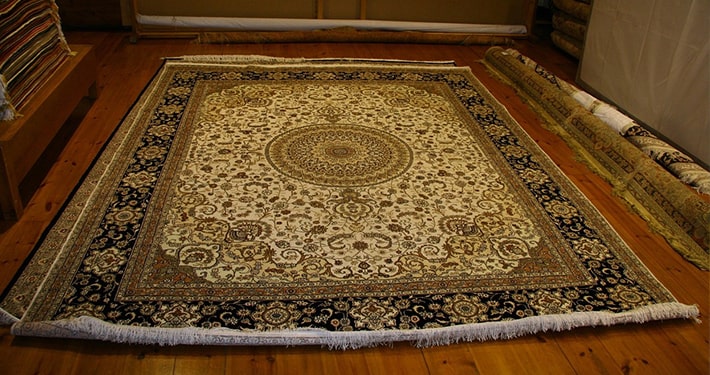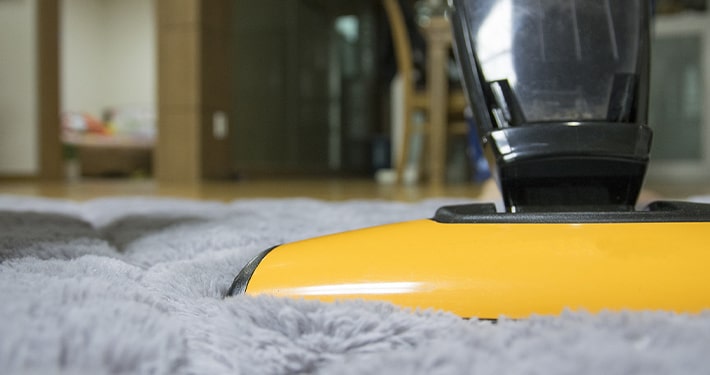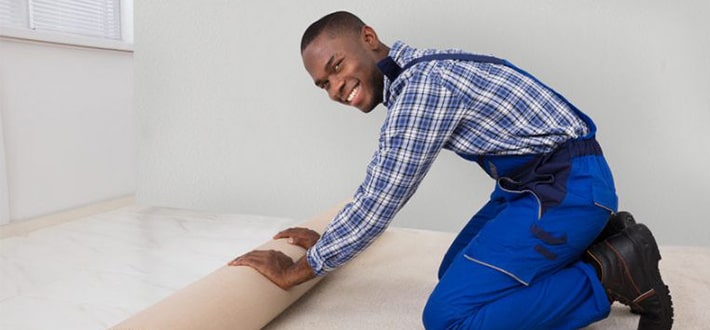Since the Middle Ages, oriental rugs have been unique for their elegance and skill. However, traditional methods are still in place for centuries to make this high-end flooring. The high-quality supplies used to make oriental rugs are one of the things that set them apart. The most expensive materials, like silk and wool, are still in demand to make the best rugs.
In this article, we’ll talk about the materials used to make high-end oriental rugs, what they’re made of, and how important they are to make a rug.
Materials Used
Following are some of the materials still highly esteemed for a quality rug:
Fleece
Among the most common things used to make an oriental rug is wool. It’s taken from the wool of sheep, a natural fiber. Fleece is a durable material valued for being long-lasting, soft, and naturally resistant to water and stains. It is also good at keeping the heat in, which makes it an excellent material for rugs.
The breed of sheep, the area where it grows, and the weather all affect the quality of the fleece used in oriental rugs. The best wool comes from central Asia’s harsh, cold mountains, where sheep are available. This wool is well-known for being strong, shiny, and durable.
Oriental rugs are often woven from hand-spun wool, which gives them a distinctive appearance and feel. Made by using a spindle to twist the wool strands together, hand-spun wool is a labor-intensive process. The procedure takes time and work, but the yarn from it is more robust and lasts longer than machine-spun wool.
Silk
Silk is among the most expensive things used to make oriental rugs. It is a natural product made from the silkworm’s cocoon. Silk has high value for how soft, shiny, and long-lasting it is. It is also good at keeping the heat in, which makes it an excellent material for rugs.
Silk is much costlier than wool, so it’s usually only used in high-end rugs or as part of the design. However, silk is also used to make designs and patterns that are hard to make with wool alone.
The sacs of the Bombyx mori silkworm are the primary source of the silk used in oriental carpets, which is grown in China and other Asian countries. Mulberry leaves are what the silkworms eat, and this helps them make high-quality silk fiber. The fibers are then hand-spun into yarns to make intricate designs and patterns in high-end oriental rugs.
Cotton
Cotton is another material that is often used to make oriental rugs. It comes from a cotton plant and is a natural fiber. Cotton is popular because it is strong, lasts long, and is soft. It’s also accessible to color, which makes it an excellent material for colorful rugs.
Most oriental rugs have cotton as their base. The cotton strands are intricately intertwined with each other to create a sturdy base that can hold up the weight of the pile. The fringe around the rug’s edges is also made of cotton.
Assorted Materials
Oriental rugs can also be of certain other materials like:
Goat hair: Nomadic rugs often have goat hair in them. Its robust and coarse fiber works well in rough outdoor settings.
Metal threads: Gold or silver metal threads can be woven into a high-end rug’s design to give it a sense of luxury and elegance.
Importance of Materials
The materials used to make an oriental rug are a big part of how good it is and how much it’s worth. The most expensive materials, like silk and high-quality wool, make the best rugs. Not only do these materials look and feel expensive, but they also make the rug more robust and last longer.
The design and complexity of a rug are also affected by how well the materials are. Silk is frequently employed to make designs and patterns that are hard to make with wool alone. The rug’s design is also influenced by the kind of wool used. Fine wool from highland sheep makes a robust and shiny yarn that can retain fine details, while coarse wool from lowland sheep makes a denser, more rustic yarn stronger for simple designs.
Artisanship
The materials making rugs are just one part. The skill needed to turn such materials into a work of art is just as important. The finest oriental rugs are crafted using old methods which did pass down from generation to generation.
The Weavers
The weavers use traditional techniques passed down from generation to generation to turn materials into works of art in oriental rug-making. Hand-knotting is one of the most critical techniques used to make these rugs. Using a small, sharp knotting hook, the weaver ties each knot around the warp threads, and then the pile tightly packs the weft threads together. This time-consuming process enables weavers to make intricate patterns and designs.
Dyeing Process
Dyeing is another essential skill in oriental rug-making. The weavers use a complicated process to create the vibrant colors of these rugs. Most dyes come from natural sources like plants, insects, and minerals. The weavers meticulously control the temperature and timing of the dyeing process to ensure consistent color and saturation.
The Outcome
The quality and value of the rug are mainly by the materials used in oriental rug-making. The finest rugs are a creation of luxurious silk and high-quality wool. These materials give the rug a luxurious look, feel durability, and longevity. Silk is often used to create intricate patterns and designs that are difficult to achieve using wool alone. The type of wool used also affects the rug’s design. Fine wool from highland sheep produces a lustrous, resilient yarn that can hold fine details, while coarser wool from lowland sheep produces a thicker, more rustic yarn that is better suited for simpler designs.
Takeaways
- Oriental rug-making requires both skill and supplies. These works employ hand-knotting and dyeing.
- Hand-knotting takes time, but weavers may produce elaborate patterns and motifs. Finally, packing weft threads firmly creates the pile.
- A sophisticated dying procedure gives oriental carpets their brilliant hues. Weavers meticulously control the dyeing temperature and time, using natural colors from plants, insects, and minerals.
- Oriental rug quality and worth depend on their materials. Silk and wool make the best carpets.
- Silk creates elaborate patterns and motifs that wool cannot. Fine wool from highland sheep makes a shiny, robust yarn, whereas coarser wool from lowland sheep produces a thicker, more rustic yarn, which impacts the rug’s pattern.
Bottom Line
Trying to find a trustworthy organization to care for your oriental rugs? NYCleaners is your best bet.
Our experienced cleaners clean and repair high-end oriental rugs as their specialty. We only use effective cleaning products and tools to restore your rug to how it looked when you bought it.
In addition, our delivery and pickup service makes cleaning your rug easy and convenient. So, don’t let dirt and stains ruin the look of your rug. Instead, call NYCleaners for all your oriental rug cleaning jobs.






